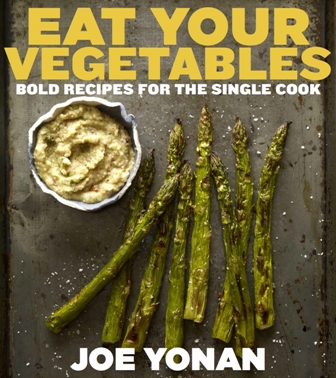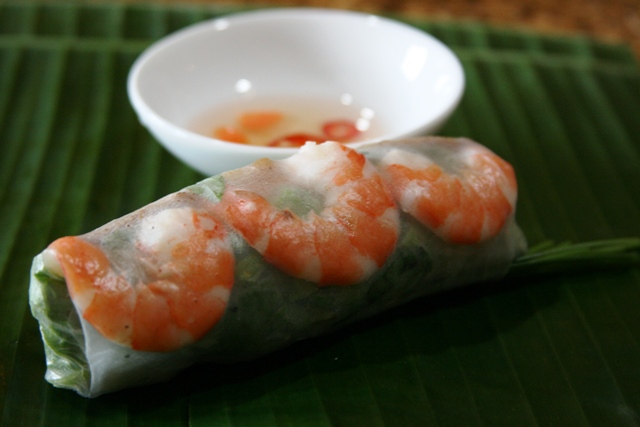
My earliest memory of eating vegetables involves my mother chasing me around the living room balancing a plateful of stir-fried spinach and rice in one hand, and desperately trying to shove dinner spoonful-by-spoonful past my uncooperative lips with the other.
I must admit I’ve come a long way since then. In fact, I even consider myself a flexitarian, preferring a larger portion of vegetables to meat (which, by the way, is the Asian way).
I’ve come to love previously abhorred greens such as ladies finger (okra), mustard cabbage, and choy sum (Chinese flowering cabbage). Even spinach, my childhood nemesis, tastes sweet on my adult tongue!
The trick, I’ve learned, is to select the freshest specimens you can find, and to cook the vegetables well. This means no wilty leaves, or brown, mushy spots on your bok choy. And heaven forbid you should overcook your broccoli! These tactics are even more important now that I have a child. As many a parent has come to realize, little people are the most persnickety of vegetable eaters.
I have some tips to offer any mom or spouse with a veggie-cynic on their hands, none of which involve hiding zucchini or Brussels sprouts (a technique I don’t quite approve of). However, I don’t disapprove of embellishing with ingredients that will make vegetables more palatable for naysayers big and small.
1. Roasting can make even the most banal of vegetables as addictive as candy (just think of the roasted kale chips craze). Roasting turns kale, cauliflower, broccoli crisp and crunchy and concentrates their sweetness through caramelization.
2. Pickling vegetables is another great way to get them to slide easily down your child’s throat. My son devours pickled cucumbers and carrots by the bushel.
3. Experiment with umami-laden ingredients like oyster sauce, soy sauce, fish sauce, miso, anchovies, and pickled veggies to amp up the flavor in a salad or stirfry. (My recipe below uses both soy sauce and pickled radish). And trust me, sambal terasi/belacan (shrimp paste and chilies) can transform ho-hum spinach into yum-yum!

4. Toss vegetables like cauliflower, eggplant, okra into curry and they will soak up all that tasty goodness.
5. If all else fails, add bacon.
6. Oh, and here’s one more suggestion: buy Joe Yonan’s latest book, titled coincidentally, Eat Your Vegetables.
What’s your secret trick or dish that has been known to win over the most hardened of vegetable-haters? Please share below!
~~~
Haricots Verts with Preserved Radish
Haricots verts and preserved radish are an unlikely combination but this dish is a hit with both my 3-year-old son and husband. Read: there are never any leftovers! I adapted this recipe from Steamy Kitchen’s green bean stir-fry recipe. On a whim, I used haricots verts, also called filet beans, the green bean’s slender French cousin (crikey, even their veggies are skinnier!). These beans are very tender and “beanier” in flavor when young but can turn tough if allowed to mature.
As for the preserved radish, you can buy either the sweet or salted kind at the Asian market—it will say on the bag. It doesn’t make too much of a difference as both are preserved with salt and sugar. I know it’s a big bag but you’ll use it up in no time in pad Thai, omelets and numerous stirfries! If you can’t find preserved salted radish, use more garlic or add some chopped shallots.
Time: 15 minutes
Makes: 4 to 6 servings as part of a multicourse, family meal
1 pound haricots verts, trimmed
1/8 cup preserved salted radish
1 tablespoon canola oil
2 cloves garlic, minced
2 teaspoons soy sauce
1/2 teaspoon sesame oil
1/8 teaspoon sugar
Bring a large pot of salted water to a boil. Add the haricots verts and parboil until crisp-tender, 4 to 5 minutes. (You can also microwave (3 to 4 minutes) or steam them for the same amount of time.) Don’t overcook as you will be stirfrying them later. Drain in a colander and rinse under cold running water.
While the beans are cooking, soak the preserved radish in a small bowl of water for a couple of minutes to get the excess salt off. Squeeze them dry then mince.
Swirl the oil into a large wok or skillet and heat over high heat until it starts to shimmer. Add the preserved radish and garlic and stir and cook until the garlic is fragrant, about 1 minute. Toss in the cooked haricots verts and drizzle with soy sauce and sesame oil. Sprinkle the sugar and stir and cook until the beans are coated with sauce and heated through. Serve immediately with hot cooked rice and/or a main dish.
~~~
This post is part of the monthly Let’s Lunch Twitter blogger potluck. This month, we celebrate the launch of Washington Post food and travel editor, and fellow Let’s Luncher, Joe Yonan’s latest cookbook, Eat Your Vegetables: Bold Recipes for the Single Cook (Ten Speed Press, August 6, 20123).
For more Let’s Lunch veggie-centric posts, follow #LetsLunch on Twitter or visit my fellow bloggers below:
Annabelle‘s Farmer’s Market Gazpacho at Glass of Fancy
Cheryl‘s Egg-Drop Broccoli with Ginger-Miso Gravy at A Tiger in the Kitchen
Eleanor‘s Green Beans Two Ways at Wok Star
Grace‘s Vegetable Tempura at HapaMama
Jill‘s Fusilli with Corn Sauce at Eating My Words
Joe‘s Guaca-Chi at Joe Yonan
Linda‘s Chocolate-Zucchini Twinkies at Free Range Cookies
Linda‘s Gateway Brussels Sprouts at Spicebox Travels
Lisa‘s Totally “Free” Veggie Soup at Monday Morning Cooking Club
Vivian‘s Kangkong (Water Spinach) with Fermented Beancurd, Chili and Garlic at Vivian Pei
~~~
What’s your secret trick or dish that has been known to win over the most hardened of vegetable-haters?




















